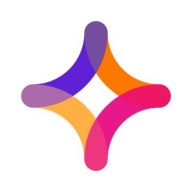

Find out in this report how the two Cloud Data Integration solutions compare in terms of features, pricing, service and support, easy of deployment, and ROI.


Confluent is an enterprise-ready, full-scale streaming platform that enhances Apache Kafka.
Confluent has integrated cutting-edge features that are designed to enhance these tasks:
Confluent is a more complete distribution of Kafka in that it enhances the integration possibilities of Kafka by introducing tools for managing and optimizing Kafka clusters while providing methods for making sure the streams are secure. Confluent supports publish-and-subscribe as well as the storing and processing of data within the streams. Kafka is easier to operate and build thanks to Confluent.
Confluent's software is available in three different varieties:
Confluent Advantage Features
Confluent has many valuable key features. Some of the most useful ones include:
Reviews from Real Users
Confluent stands out among its competitors for a number of reasons. Two major ones are its robust enterprise support and its open source option. PeerSpot users take note of the advantages of these features in their reviews:
Ravi B., a solutions architect at a tech services company, writes of the solution, “KSQL is a valuable feature, as is the Kafka Connect framework for connecting to the various source systems where you need not write the code. We get great support from Confluent because we're using the enterprise version and whenever there's a problem, they support us with fine-tuning and finding the root cause.”
Amit S., an IT consultant, notes, “The biggest benefit is that it is open source. You have the flexibility of opting or not opting for enterprise support, even though the tool itself is open source.” He adds, “The second benefit is it's very modern and built on Java and Scala. You can extend the features very well, and it doesn't take a lot of effort to do so.”
Jitterbit Harmony is a comprehensive platform for data integration and API management, enabling seamless synchronization and automation across cloud-based and on-premises applications.
Users leverage Jitterbit Harmony to integrate systems like ERP and CRM applications, simplifying complex data workflows and enhancing automation. It supports efficient data migration and ensures smooth connectivity, handling diverse integration needs and helping streamline business processes. Users emphasize its drag-and-drop functionality and extensive templates, which contribute to its robust performance. However, improvements are needed in data mapping, error message clarity, and documentation, especially when dealing with large data volumes.
What are the key features of Jitterbit Harmony?Companies across retail, manufacturing, healthcare, and finance sectors use Jitterbit Harmony to integrate critical applications and automate workflows. In retail, it connects inventory systems with sales platforms, reducing manual effort. Manufacturers sync their ERP systems with supply chain software, optimizing operations. Healthcare organizations integrate patient management systems with insurance databases, streamlining patient care. Financial institutions use it to connect accounting software with banking systems, ensuring real-time financial data exchange.
We monitor all Cloud Data Integration reviews to prevent fraudulent reviews and keep review quality high. We do not post reviews by company employees or direct competitors. We validate each review for authenticity via cross-reference with LinkedIn, and personal follow-up with the reviewer when necessary.